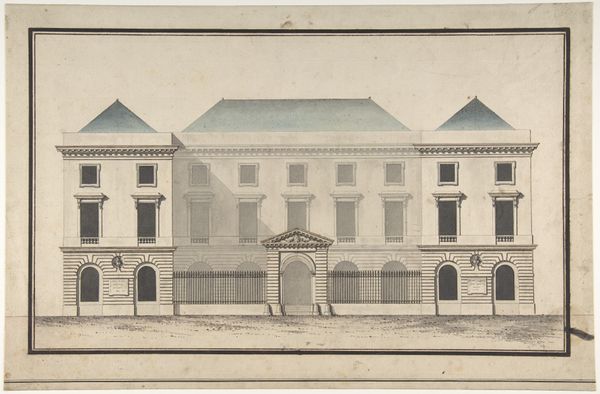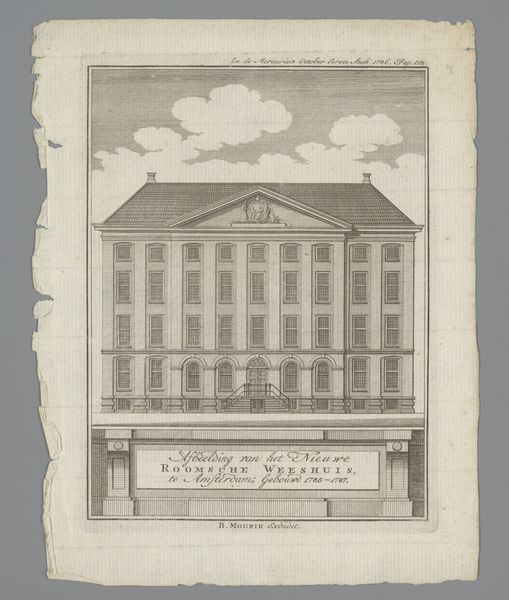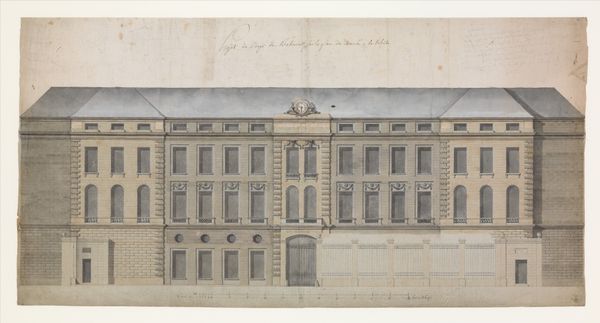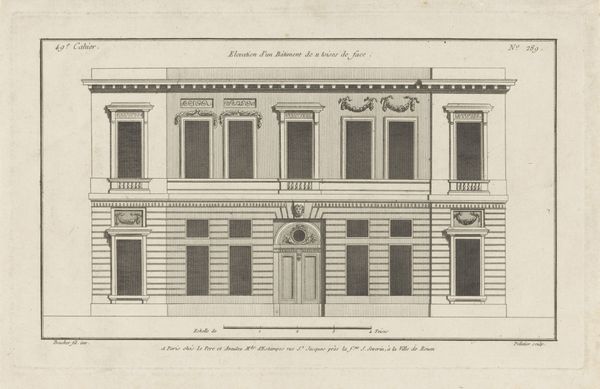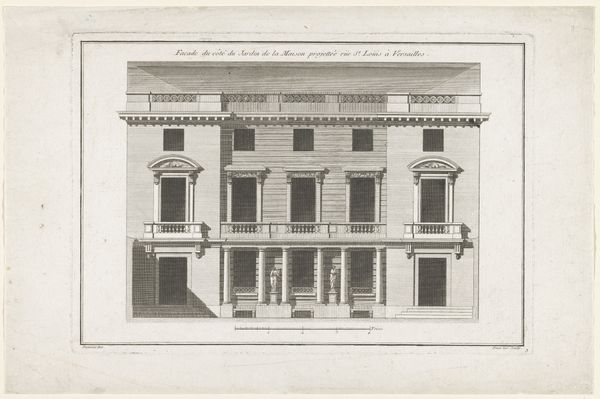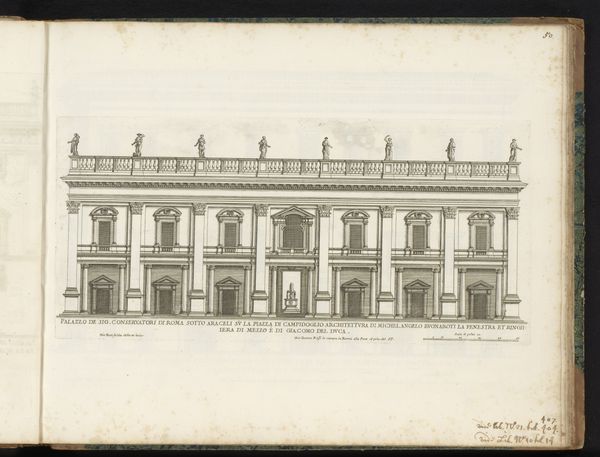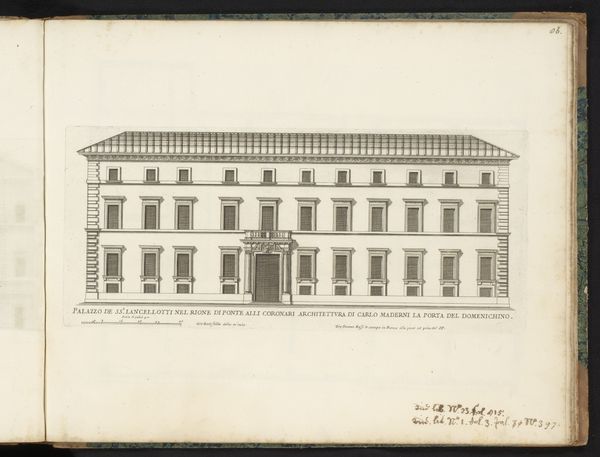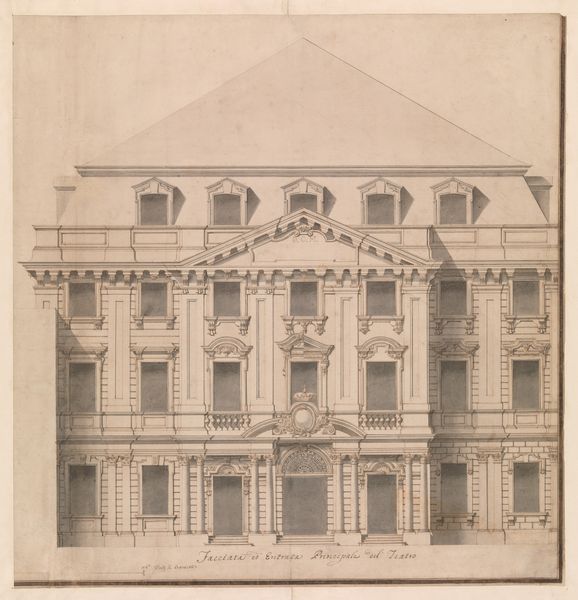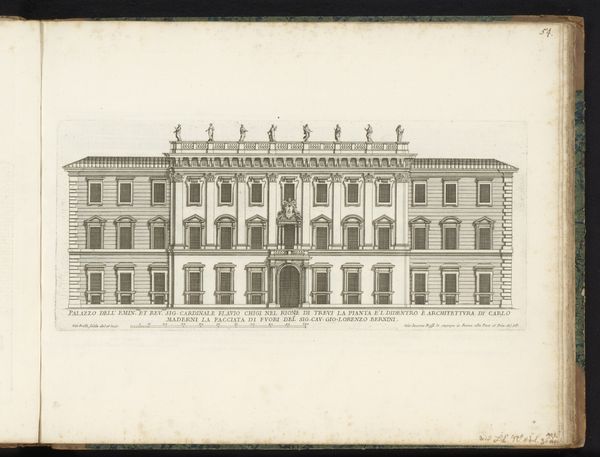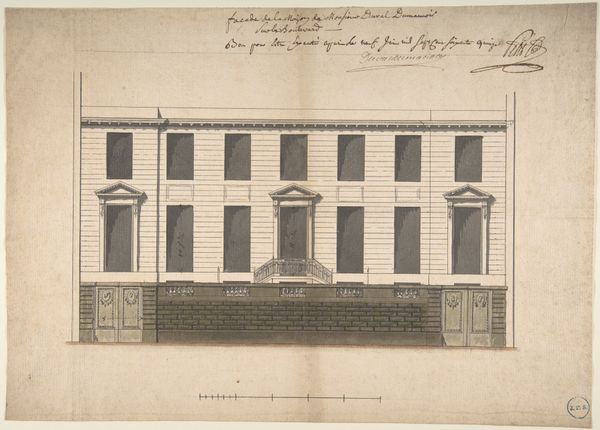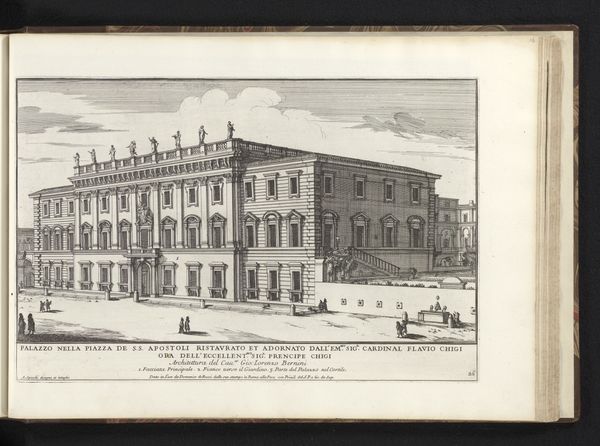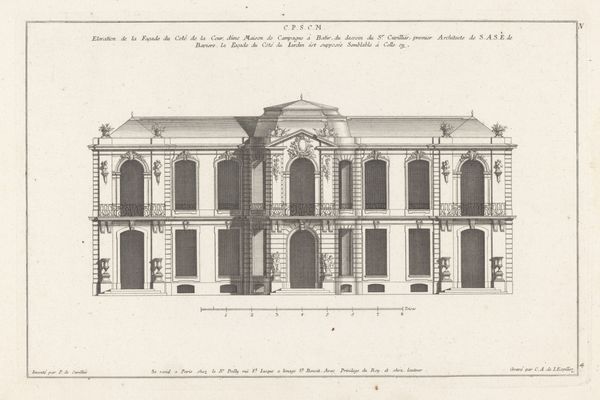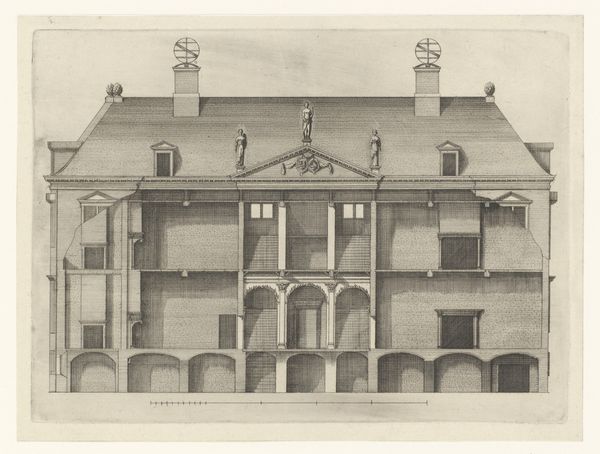
Elevation of the Facade of the Hôtel de Montholon, Paris 1785 - 1786
0:00
0:00
drawing, print, pen, architecture
#
drawing
#
neoclacissism
# print
#
perspective
#
arch
#
pen
#
architecture
Dimensions: 18 1/2 x 27 1/4 in. (47 x 69.2 cm)
Copyright: Public Domain
Editor: This is Jean-Jacques Lequeu’s “Elevation of the Facade of the Hôtel de Montholon, Paris,” created between 1785 and 1786. It's a detailed architectural drawing, rendered in pen and ink. I'm struck by its precision and the way it seems to portray the hotel as an imposing fortress. What stands out to you? Curator: Lequeu's image provides a glimpse into the ambitions of the Neoclassical period, one striving to recapture the grandeur of ancient Rome, yet filtered through the lens of the Enlightenment's emphasis on reason and order. Look at the strict symmetry and the imposing columns. How does that imagery relate to the prevailing social hierarchies of pre-revolutionary France? Editor: I see what you mean! The symmetry definitely speaks to order, but the lack of warmth, and maybe the imposing scale, also feels representative of a rigid social structure. The Hotel then becomes more than just a building. Curator: Exactly. Consider this was made on the eve of the French Revolution. Architecture like this served to visually legitimize and project power. Does this elevation hint at anxieties regarding that power and privilege in the face of coming upheaval? Think about what and whom this aesthetic excludes, and perhaps even implicitly critiques, through its emphasis on stark geometry and classical references. Editor: That's fascinating; I hadn’t considered that an architectural drawing could be so politically charged. The clear lines almost seem like a way to control chaos. Curator: Lequeu wasn't just documenting a building, he was participating in a visual and ideological discourse. The drawing prompts us to question whose vision of order was being imposed, and at what cost. Editor: I'm going to view architectural drawings in a totally different way now! Thank you. Curator: My pleasure! Hopefully this insight can help to expand how we understand art's engagement with political realities.
Comments
No comments
Be the first to comment and join the conversation on the ultimate creative platform.
